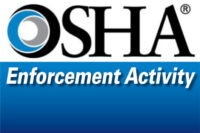Food safety group: Privatizing poultry inspections result in contaminated food

A national consumer group says reports prove that an expansion of the the USDA’s controversial pilot project for privatized inspection in poultry slaughter plants could result in defective and unsanitary poultry contaminated with feathers, bile and feces making its way to consumers.
According to the report, released by Food & Water Watch, an analysis of the USDA’s HACCP-based Inspection Models Project (HIMP) – obtained through the Freedom of Information Act -- reveals large numbers of defects are routinely being missed when inspection tasks are performed by company employees instead of USDA inspectors.
“Based on the data coming out of the plants where this privatized inspection scheme is already in place, it is unacceptable for USDA to try to expand this program to more plants,” said Wenonah Hauter, executive director of Food & Water Watch.
Hauter said she House Agriculture Appropriations subcommittee should be asking “tough questions about why USDA is planning to leave consumers at risk to save money.”
Privatization will save millions, speed up lines
The USDA has been running the pilot project with privatized inspection in two-dozen slaughter facilities since 1998. The agency is proposing an expansion of the pilot to all poultry slaughter plants, and forecasts that over three years this change will save $90 million through the elimination over 800 inspector positions. And, since most poultry plants will be able to increase their production line speeds to 175 birds per minute, the industry expects to save an estimated $256.6 million in production costs.
Poultry plants involved in the HIMP pilot have been granted line speed waivers. Some plants in the pilot have operated at line speeds upwards of 200 birds per minute, compared to 35 birds per minute for which each USDA inspector is responsible for in plants receiving conventional inspection.
Part of the pilot project is a verification program that samples between 20 to 80 birds per slaughter line during an eight-hour shift to check for defects missed by company employees. Thousands of poultry carcasses may be processed on each line during any given shift of production. The defects fall into seven different categories; two are considered ‘Food Safety’ issues and the other five are considered to be ‘Other Consumer Protection’ issues.
Many defects missed
Using the Freedom of Information Act, Food & Water Watch obtained verification inspection documents (HIMP Form 1) and non-compliance reports (NRs) for 14 poultry plants involved in the HACCP-based Inspection Models Project (HIMP) from January 1, 2011 through August 2011 for the first shift of production. The USDA supplied more than 5,000 pages of documents, which revealed:
Company employees miss many defects in poultry carcasses. The inspection category that had the highest error rate was ‘Other Consumer Protection 4’ for dressing defects such as feathers, lungs, oil glands, trachea and bile still on the carcass. The average error rate for this category in the chicken slaughter facilities was 64 percent and 87 percent in turkey slaughter facilities.In one turkey slaughter facility, nearly 100 percent of samples found this category of defect.
The data showed wide variation in the number of defects missed from plant-to-plant.There seems to be no consistency across the industry.
The overwhelming number of non-compliance records filed for the 14 plants was for fecal contamination found on the carcasses. Out of 229 NRs filed from March to August 2011, 208 (90%) were for visible fecal contamination that was missed by company employees.
One notable NR stated, “I observed a section of intestine wrapped around the rotating paddles in the neck chiller.The intestine was approximately 1 1/2 feet in length, contained fecal material. Additionally, numerous other pieces (of) digestive tract materials, such as chicken crops and esophagus were also observed in the neck chiller…This regulatory noncompliance would potentially allow for the cross contamination of necks by digestive contents material such as ingesta and/or feces.”
USDA inspectors are trained
“USDA inspectors receive extensive training to protect public health in poultry facilities, but there is no similar requirement for company employees to receive training before they assume these inspection responsibilities in the proposed privatized inspection system,” said Hauter. “USDA’s proposal to shift this public health responsibility to company employees is a budget-cutting maneuver that puts consumers at risk.”
Non-Compliance Reports and Plant Performance Results
Looking for a reprint of this article?
From high-res PDFs to custom plaques, order your copy today!







